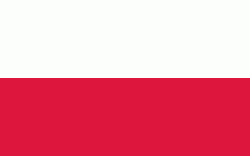Pyskowice
 |
It is situated in the Silesian Voivodeship since its formation in 1999, previously it was in Katowice Voivodeship. Pyskowice is one of the towns of the 2.7 million conurbation – Katowice urban area and within a greater Silesian metropolitan area populated by about 5,294,000 people. The population of the town is 18,432 (2019). It borders Gliwice, one of the largest cities of the metropolitan area, in the south.
The name of the town comes from the Old Polish male name Pysk. The oldest known mention of Pyskowice comes from a document of Bishop of Wrocław Tomasz from 1256. It was granted town rights in 1260 by Duke Władysław Opolski. The town was part of fragmented Piast-ruled Poland. It remained part of various Polish-ruled duchies, including Bytom, Cieszyn, Oświęcim and Opole, until 1532 when it was incorporated to the Bohemian (Czech) Crown. In 1645, along with the Duchy of Opole, it came back under Polish rule under the House of Vasa.
It was annexed by Prussia in the 18th century, and from 1871 it was also part of Germany until 1945. In 1842, the town had a population of 3,322, mostly Polish by nationality, and Catholic by confession. Despite Prussian rule, church services were still held mainly in Polish at the time, with German services held only every fourth Sunday. In the 1921 Upper Silesia plebiscite, 73.6% of the residents voted to remain in Germany, while in the present-day district (then separate village) of Dzierżno 67.5% voted to rejoin Poland, which just regained independence following the First World War.
During the Second World War, the Germans established and operated the E578 and E749 forced labour subcamps of the Stalag VIII-B/344 prisoner-of-war camp in the town, and the E110 and E709 subcamps in the present-day district of Dzierżno. Canadian and British prisoners of war had to work there for their German captors. The Germans also operated an additional forced labour camp for Jewish men in 1942–1944. In January 1945, as the Soviet armies resumed their offensive, the prisoners based in Pyskowice were marched westward in the so-called Long March or Death March. Some died from the bitter cold and exhaustion. Eventually the survivors were liberated by American troops in April or May 1945. After the war, the town became again part of Poland under its restored historic name.
In 1984, town limits were expanded by including Mikuszowina as a new district.
Map - Pyskowice
Map
Country - Poland
 |
 |
| Flag of Poland | |
Poland has a temperate transitional climate and its territory traverses the Central European Plain, extending from Baltic Sea in the north to Sudeten and Carpathian Mountains in the south. The longest Polish river is the Vistula, and Poland's highest point is Mount Rysy, situated in the Tatra mountain range of the Carpathians. The country is bordered by Lithuania and Russia to the northeast, Belarus and Ukraine to the east, Slovakia and the Czech Republic to the south, and Germany to the west. It also shares maritime boundaries with Denmark and Sweden.
Currency / Language
| ISO | Currency | Symbol | Significant figures |
|---|---|---|---|
| PLN | Polish złoty | zÅ‚ | 2 |
| ISO | Language |
|---|---|
| PL | Polish language |
















